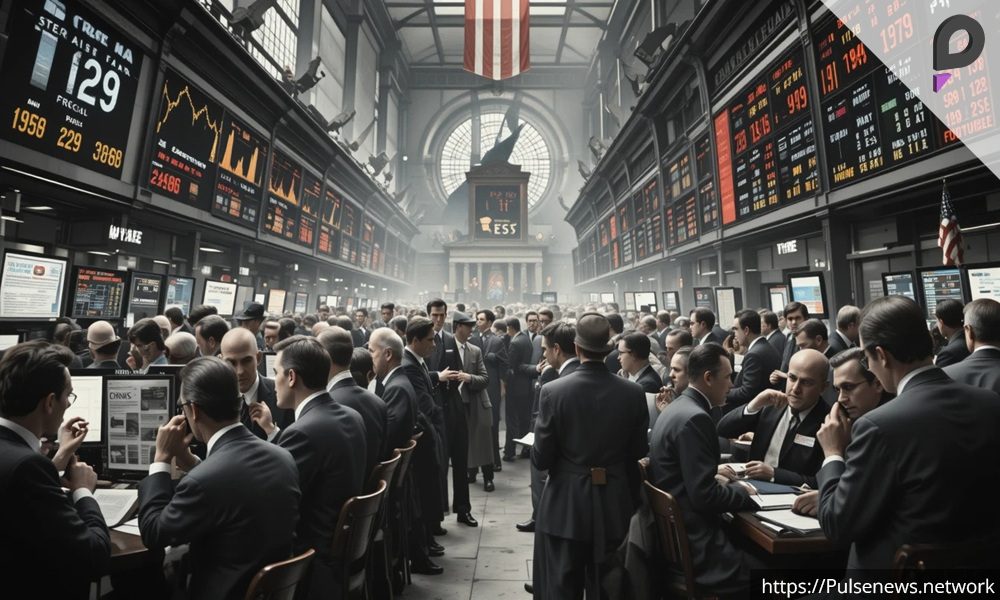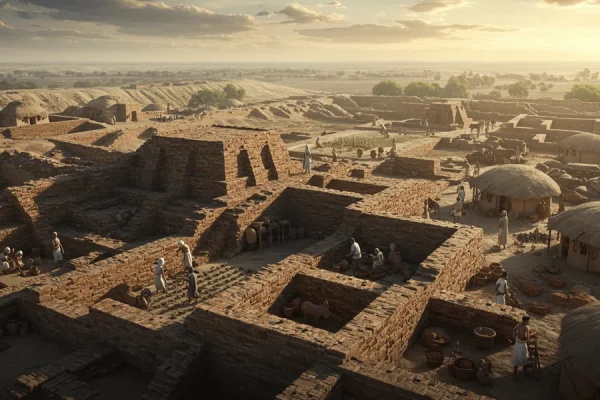Stock Market Crash of 1929 was one of the most devastating events in global economic history, marking the end of the Roaring Twenties and the beginning of the Great Depression. This catastrophic event not only reshaped the financial landscape of the United States but also had profound repercussions worldwide.
The Roaring Twenties: Setting the Stage
The 1920s, often referred to as the Roaring Twenties, was a decade of economic prosperity and cultural transformation in the United States. Industrial production soared, new technologies like automobiles and radios revolutionized daily life, and the stock market experienced unprecedented growth.
Economic Boom and Stock Market Euphoria
During the 1920s, the U.S. economy expanded rapidly, and optimism was at an all-time high. The stock market came to represent prosperity and potential. Millions of Americans, including middle-class families, began investing in stocks, hoping to capitalize on the booming economy. Speculation became rampant, with many buying stocks on margin borrowing money to purchase shares. This practice amplified gains but also increased risks significantly.
Factors Behind the Stock Market Crash of 1929
Several factors contributed to the Stock Market Crash of 1929, creating a perfect storm that led to the collapse.
Over-Speculation and Margin Trading
One of the primary causes of the crash was excessive speculation. Investors were convinced that stock prices would keep increasing without end. Many bought stocks on margin, which meant they only paid a fraction of the stock’s price upfront and borrowed the rest. When stock prices fell, these investors faced margin calls, forcing them to sell their stocks at a loss, further driving prices down.
Lack of Regulation
During the 1920s, the stock market operated with minimal regulation. Insider trading, market manipulation, and speculative bubbles were common. Without oversight, the market became increasingly unstable.
Declining Consumer Spending
By the late 1920s, consumer spending began to decline. Farmers and industrial workers, who made up a significant portion of the population, were struggling financially. As demand for goods decreased, companies faced declining revenues, leading to layoffs and a downward spiral.
Unequal Wealth Distribution
The prosperity of the Roaring Twenties was not evenly distributed. A significant portion of wealth was concentrated in the hands of a few, leaving the majority with limited purchasing power. This economic imbalance contributed to the instability of the market.
International Economic Weakness
Global economic conditions also played a role. Many European countries were still recovering from World War I and faced economic difficulties. The interconnectedness of global markets meant that problems abroad could exacerbate issues in the U.S.
Black Thursday, Black Monday, and Black Tuesday
The Stock Market Crash of 1929 unfolded over several days, with Black Thursday, Black Monday, and Black Tuesday marking key moments of panic.
Black Thursday October 24, 1929
On this day, panic selling began as investors started to lose confidence in the market. A record 12.9 million shares were traded, and stock prices plummeted. Leading banks and financial institutions intervened, buying large volumes of stocks to stabilize the market temporarily.
Black Monday October 28, 1929
The panic intensified on Black Monday. Investors rushed to sell their stocks, and the market lost a significant portion of its value. Confidence in the market was eroding rapidly.
Black Tuesday October 29, 1929
Black Tuesday was the final blow. Over 16 million shares were traded, and the market experienced its largest single-day decline. The stock market had officially crashed, wiping out billions of dollars in wealth and plunging the country into financial chaos.

Immediate Consequences of the Crash
The aftermath of the Stock Market Crash of 1929 was devastating, both economically and socially.
Bank Failures
Thousands of banks failed as panicked depositors withdrew their savings. Without sufficient reserves, many financial institutions were forced to close their doors.
Unemployment Surge
The crash led to widespread layoffs as companies struggled to survive. Unemployment rates skyrocketed, with millions of Americans losing their jobs and livelihoods.
Decline in Consumer Confidence
The crash shattered public confidence in the economy. People cut back on spending and hoarded their savings, exacerbating the economic downturn.
The Great Depression A Global Catastrophe
The Stock Market Crash of 1929 marked the beginning of the Great Depression, a decade-long economic downturn that affected countries worldwide.
Economic Impact
The U.S. economy contracted severely, with GDP declining by nearly 30% between 1929 and 1933. International trade collapsed as countries imposed tariffs to protect their industries, worsening the global economic crisis.
Social Consequences
The Great Depression led to widespread poverty and suffering. Families lost their homes, farms were foreclosed, and shantytowns, known as Hoovervilles, sprang up across the country. The social fabric of the nation was tested as people struggled to survive.
Insights Gained from the Stock Market Crash of 1929
The Stock Market Crash of 1929 highlighted the need for reforms to prevent similar disasters in the future. Several important lessons were learned:
The Importance of Regulation
The crash underscored the need for regulatory oversight of financial markets. In response, the U.S. government established the Securities and Exchange Commission (SEC) in 1934 to oversee and regulate the stock market.
Diversification of Investments
Investors learned the importance of diversification to reduce risk. Relying heavily on a single asset class, like stocks, can lead to significant losses during market downturns.
The Role of Central Banks
The Federal Reserve’s actions during the crash were criticized for being inadequate. This event highlighted the importance of proactive monetary policy to stabilize the economy during financial crises.
The Aftermath of the 1929 Crash
The Stock Market Crash of 1929 remains a defining moment in financial history. It not only led to significant economic reforms but also reshaped public perceptions of capitalism and the role of government in the economy.
Impact on Modern Markets
The lessons learned from the crash have influenced modern financial regulations and policies. Mechanisms such as circuit breakers and stricter margin requirements aim to prevent a repeat of the events of 1929.
Cultural Significance
The crash has been immortalized in literature, film, and popular culture as a cautionary tale about the dangers of unchecked greed and speculation.
Conclusion
The Stock Market Crash of 1929 was a pivotal event that reshaped the economic and social landscape of the 20th century. Its causes, events, and consequences provide valuable lessons about the importance of regulation, the dangers of speculation, and the interconnectedness of global economies. By understanding the factors that led to this financial disaster, we can better prepare for and mitigate future economic crises.












